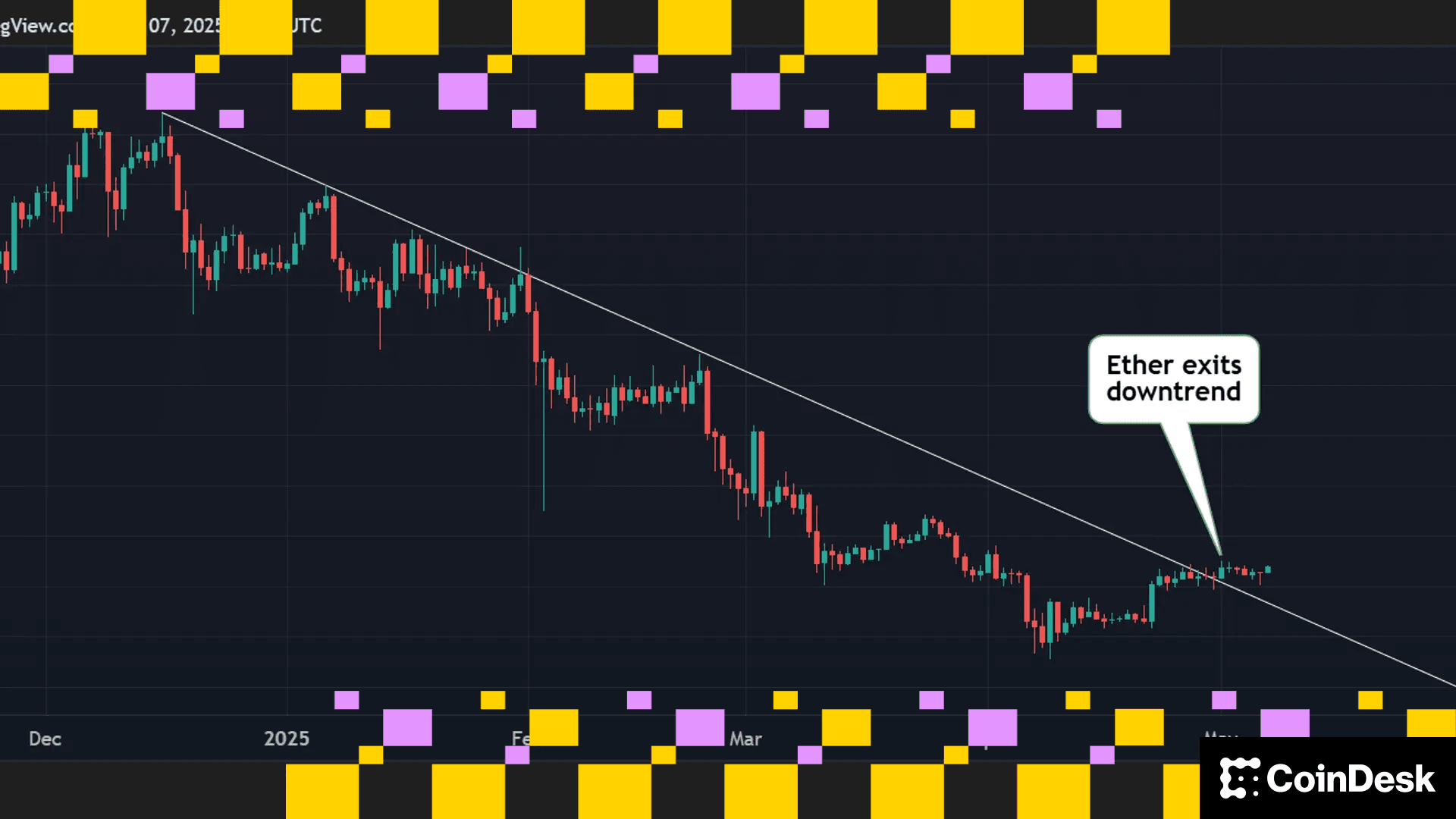Resolv Labs Raises $10M as Crypto Investor Appetite for Yield-Bearing Stablecoins Soars
Stablecoins are "perfect rails for yield distribution," the protocol's CEO and founder Ivan Kozlov said in an interview.

What to know:
- Resolv Labs raised $10 million in a seed round to scale its yield-generating stablecoin protocol Resolv. The fundraising was led by Cyber.Fund and Maven11, with Coinbase Ventures, SCB Limited, Arrington Capital, Animoca Ventures also participating.
- The protocol offers crypto-native, delta-neutral yield strategy to USR stablecoin holders, inspired by structured finance products.
- The fundraising underscores the rapidly rising investor interest in stablecoin protocols that generate yield to token holders.
Resolv Labs, the firm behind the $450 million decentralized finance (DeFi) protocol Resolv, has closed a $10 million seed round to expand its crypto-native yield platform and USR stablecoin, the team told CoinDesk in an exclusive interview.
The investment round was led by Cyber.Fund and Maven11, with additional backing from Coinbase Ventures, SCB Limited, Arrington Capital, Gumi Cryptos, NoLimit Holdings, Robot Ventures, Animoca Ventures and others.
Stablecoins, a $230 billion and rapidly expanding class of cryptocurrencies with pegged prices to an external asset, are capturing attention well beyond their traditional use in payments and trading. A growing cadre of crypto protocols offer yield-bearing stablecoins or "synthetic dollars," wrapping diverse investment strategies into a digital token with a stable price and passing on part of the earnings to holders.
"I view stablecoins as the perfect rails for yield distribution," Ivan Kozlov, founder and CEO of Resolv, said in an interview with CoinDesk. "This may actually become larger than transaction stablecoins like [Tether's] USDT in the future."
The most notable example of the trend is Ethena's $5 billion USDe token, which primarily pursues a delta-neutral position by holding cryptocurrencies like BTC, ETH and SOL and simultaneously shorting equal size of perpetual futures, scooping up yield from funding rates.
Resolv also pursues a similar strategy: its USR token, anchored to $1, is a delta-neutral stablecoin designed to deliver stable yields from crypto markets, while shielding holders from sharp price swings.
The protocol achieves this by splitting risk between two layers, inspired by Kozlov's background in structured products in traditional finance. USR stablecoin holders sit in the less risky senior tranche earning stable but lower yields, with risk-tolerant investors in the protocol’s insurance layer represented by the RLP token with floating price. This model, borrowed from structured finance, aims to make crypto yields more predictable without sacrificing decentralization, Kozlov explained.
Following its launch in September 2024, the protocol quickly ballooned to over $600 million in assets driven by attractive yields during the crypto rally after Donald Trump's election victory, DefiLlama data shows. However, as markets turned bearish and yields compressed, Resolv's total value locked (TVL) also slid to around $450 million this month.
With the new capital raise, Resolv plans to expand its yield sources to include
CORRECTION (April 16, 15:30 UTC): Removes reference to SCB Limited's affiliation.
More For You
Exchange Review - March 2025

CoinDesk Data's monthly Exchange Review captures the key developments within the cryptocurrency exchange market. The report includes analyses that relate to exchange volumes, crypto derivatives trading, market segmentation by fees, fiat trading, and more.
What to know:
Trading activity softened in March as market uncertainty grew amid escalating tariff tensions between the U.S. and global trading partners. Centralized exchanges recorded their lowest combined trading volume since October, declining 6.24% to $6.79tn. This marked the third consecutive monthly decline across both market segments, with spot trading volume falling 14.1% to $1.98tn and derivatives trading slipping 2.56% to $4.81tn.
- Trading Volumes Decline for Third Consecutive Month: Combined spot and derivatives trading volume on centralized exchanges fell by 6.24% to $6.79tn in March 2025, reaching the lowest level since October. Both spot and derivatives markets recorded their third consecutive monthly decline, falling 14.1% and 2.56% to $1.98tn and $4.81tn respectively.
- Institutional Crypto Trading Volume on CME Falls 23.5%: In March, total derivatives trading volume on the CME exchange fell by 23.5% to $175bn, the lowest monthly volume since October 2024. CME's market share among derivatives exchanges dropped from 4.63% to 3.64%, suggesting declining institutional interest amid current macroeconomic conditions.
- Bybit Spot Market Share Slides in March: Spot trading volume on Bybit fell by 52.1% to $81.1bn in March, coinciding with decreased trading activity following the hack of the exchange's cold wallets in February. Bybit's spot market share dropped from 7.35% to 4.10%, its lowest since July 2023.
More For You











